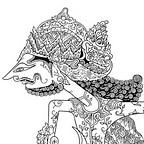Church of Notre Dame
A Photo-Essay on Lourdes in America
Church of Notre Dame had humble beginnings as a mission chapel of the Parish of St. Vincent de Paul on 23rd Street, also known as The French Church. In 1899, Mrs. Geraldyn Redmond (Estelle Livingston) purchased land later deeded in 1909 to the Fathers of Mercy, a Catholic religious institute in France. In keeping with Mrs. Redmond’s wishes, the Fathers used the land to build the mission chapel dedicated to Our Lady of Lourdes and affiliating with the Sanctuary of Our Lady of Lourdes in France.
The original chapel was dedicated in October 1910 and completed a year later, with the cornerstone of the current structure laid in March 1914 and significant expansions occurring intermittently over the next five decades. In 1919, the mission chapel became an independent parish church, while the current structural footprint was completed during the late 1920s and early 1930s. Inspired by Saint-Louis Invalides Cathedral, its architectural style is French Neoclassical, with a low roofline and shallow dome finalized in the 1960s, after plans for a high dome were canceled.
The chapel-cum-church was immediately a natural hub for French Catholics in New York City, with the congregation diversifying over time to eventually include Irish, Germans, Italians, African-Americans, Latinos, and Filipinos. Even today, while the Principal Mass is in English, the Mass before it is in French and the Mass after it is in Spanish. Furthermore, during Christmas and Easter at the very least, trilingual intercommunal celebrations are held in common Liturgy.
Authority of the Church was transferred from the Fathers of Mercy to the Archdiocese of New York in 1960, but the legacy of the Fathers and the connection with the Sanctuary of Lourdes since 1913 remain. Lourdes is prominent among Catholics for the Marian apparitions seen in 1858 by peasant Bernadette Soubirous (canonized 1933), who was told to dig a well that yielded water since considered Holy. The special affiliation with the Sanctuary of Lourdes has allowed Lourdes Water to be sent directly to the Church, making the Water regularly available there for over a century.
The Catholic Church is known for its centralized, highly institutional structure. However, Catholic traditions through history have become as diverse as the global peoples that belong to the Holy See. The French architectural and ecclesiastical aspects of the Church of Notre Dame manifestly exhibit this diversity, a fascinating example of the universal and the particular intersecting via the contingencies of history within faith.
These photos were taken on two nonconsecutive days utilizing a wide angle lens and a standard zoom lens. The photo of the Organ employed flash because of insufficient light. Acknowledgments and gratitude go to the Church and Valerie Coates for making publicly available a plethora of history both general and specific. Separate acknowledgment and gratitude goes to Señora Clarice for the spontaneous conversation, notwithstanding my own horrendously broken Spanish, on the first day, a conversation more thoughtful and genuine than most I have had in fluent English.
